I was intrigued by an image of a cypress tree on our lagoon taken on a recent foggy morning, especially since it seems to render better in black and white tones than in color. I have been trying different processing techniques using Lightroom 5.3 and the Google Nik Software Suite plugins for Lightroom, and the range of possibilities is actually quite large.
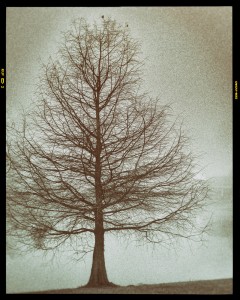 The original image was hampered by a second tree on the left which limited the available space to that side, so the composition was not ideal. I couldn’t take the image again (at least not until there is another foggy morning), so I processed it with a severe crop on the left. I used Lr 5.3 for the original conversion to b&w, and then I used Nik Silver Effects Pro and Nik Analog Effects Pro to achieve a “classic camera” look. This image was posted on the web in several discussion forums where it got some positive comments, and the resulting image is pleasing but clearly would be stronger if the full tree were able to “breathe” on all sides. Without a doubt the tree needs to be rid of that crowded feeling on the left, so I set out to remove the offending second tree.
The original image was hampered by a second tree on the left which limited the available space to that side, so the composition was not ideal. I couldn’t take the image again (at least not until there is another foggy morning), so I processed it with a severe crop on the left. I used Lr 5.3 for the original conversion to b&w, and then I used Nik Silver Effects Pro and Nik Analog Effects Pro to achieve a “classic camera” look. This image was posted on the web in several discussion forums where it got some positive comments, and the resulting image is pleasing but clearly would be stronger if the full tree were able to “breathe” on all sides. Without a doubt the tree needs to be rid of that crowded feeling on the left, so I set out to remove the offending second tree.
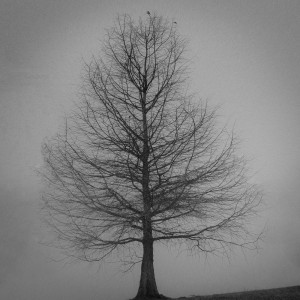 I used Adobe Photoshop CC to clone out the smaller tree, carefully removing branches which overlapped with the main subject cypress tree. I settled on a 1:1 (square) crop for the image, and then adjusted exposure and contrast to produce a pleasing (to my eye) image which I then developed further using the Nik Software Suite. This suite of plugins includes Silver Effects Pro which is designed to enable b&w processing much like the wet darkroom provided for film images, and I am learning to appreciate the range of possibilities available using this tool.
I used Adobe Photoshop CC to clone out the smaller tree, carefully removing branches which overlapped with the main subject cypress tree. I settled on a 1:1 (square) crop for the image, and then adjusted exposure and contrast to produce a pleasing (to my eye) image which I then developed further using the Nik Software Suite. This suite of plugins includes Silver Effects Pro which is designed to enable b&w processing much like the wet darkroom provided for film images, and I am learning to appreciate the range of possibilities available using this tool.
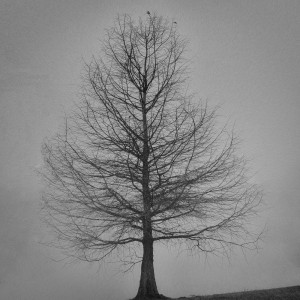 One of my favorite features of the Nik Software is that it provides a large selection of presets which quickly give images with a particular look to them. The image to the left was produced using the fine art preset, and while this image seems almost identical to the one produced in Lr 5.3, it is different in subtle ways with a smoothness to the foggy background which I like very much. Incidentally, each of the images posted here can be seen in larger size simply by clicking on the image, and a larger image will open in a new window.
One of my favorite features of the Nik Software is that it provides a large selection of presets which quickly give images with a particular look to them. The image to the left was produced using the fine art preset, and while this image seems almost identical to the one produced in Lr 5.3, it is different in subtle ways with a smoothness to the foggy background which I like very much. Incidentally, each of the images posted here can be seen in larger size simply by clicking on the image, and a larger image will open in a new window.
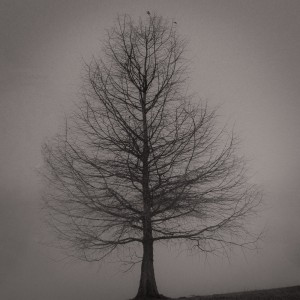
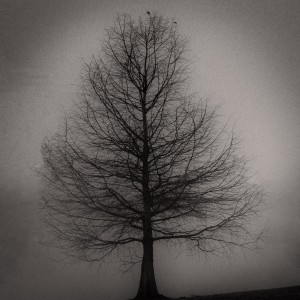
The two images above are produced using the soft sepia (left) and dark sepia (right) presets.
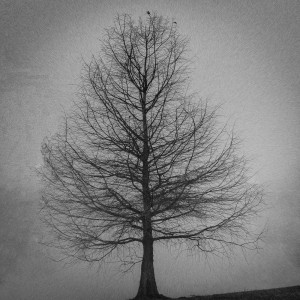
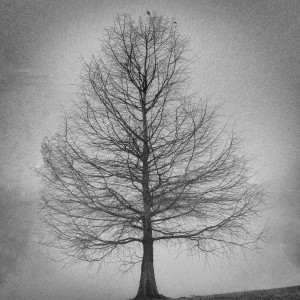
And these two images were produced using the Wet Rocks preset (left) and the Full Contrast and Structure preset (right).
Perhaps my favorite preset for this image is the Antique Plate preset, which produces the sepia-colored monochrome image below.
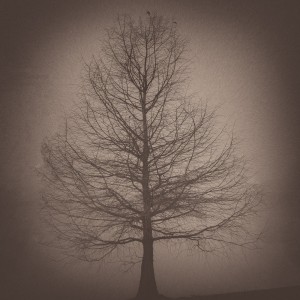
If you do your own image processing, I recommend that you try some b&w processing for appropriate images, and I recommend the Nik software Silver Effects Pro for processing monochrome images. Give it a try–you’ll be carried back to memories of the days of stained fingers from your own chemical darkroom, but this time without the smell and stains!
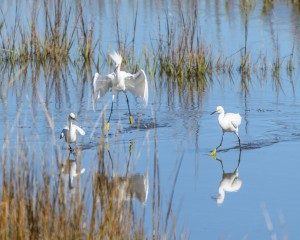 Just after we arrived at the observation deck we noticed a white wading bird in the shallows and, thinking it was an immature little blue heron, we watched a bit as it foraged. Suddenly a pair of white waders came storming in and landed near the feeding bird, and a ruckus followed as the larger of the birds seemed to be chasing the other two. The behavior seems to be classic courtship behavior of the birds, and I suppose that is exactly what is on the mind of the large bird.
Just after we arrived at the observation deck we noticed a white wading bird in the shallows and, thinking it was an immature little blue heron, we watched a bit as it foraged. Suddenly a pair of white waders came storming in and landed near the feeding bird, and a ruckus followed as the larger of the birds seemed to be chasing the other two. The behavior seems to be classic courtship behavior of the birds, and I suppose that is exactly what is on the mind of the large bird.
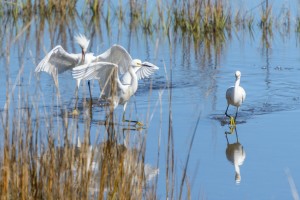
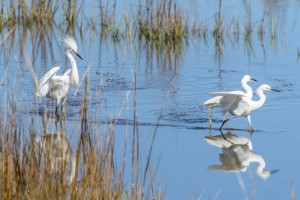
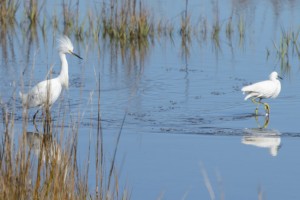
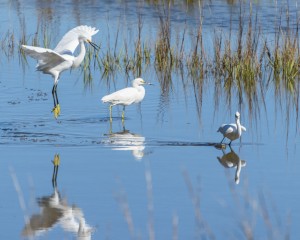
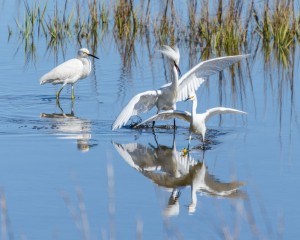
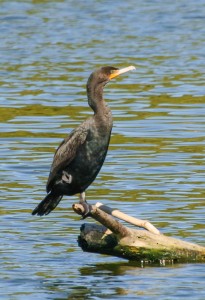
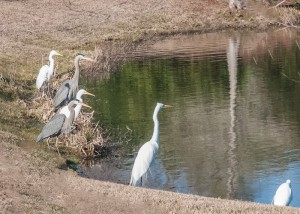
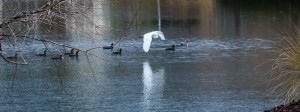
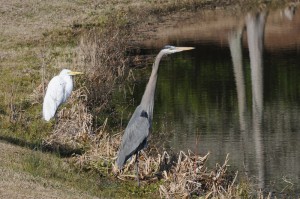
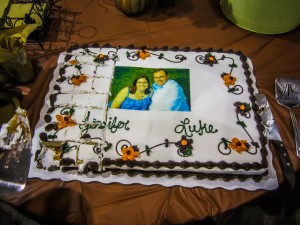
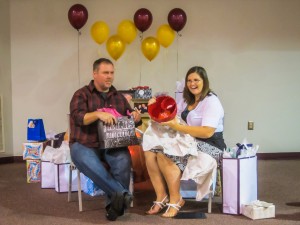
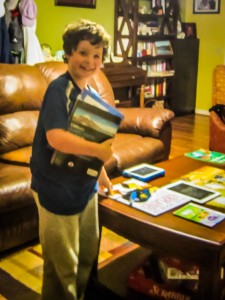
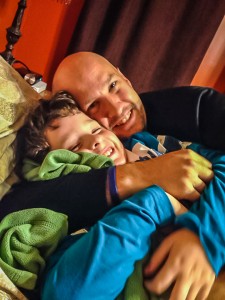
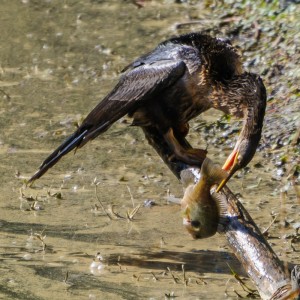
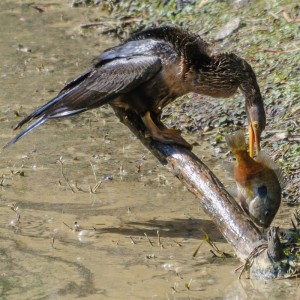
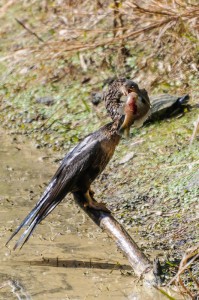
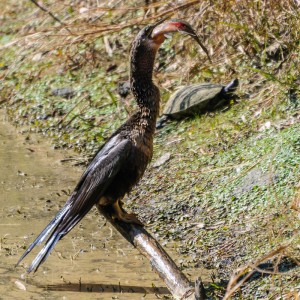
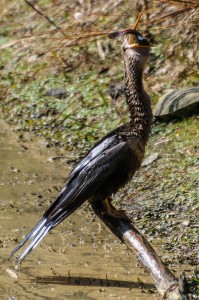
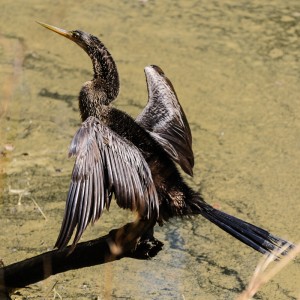
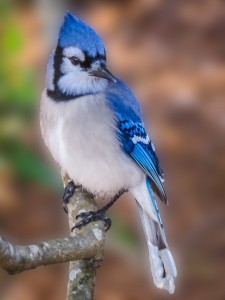
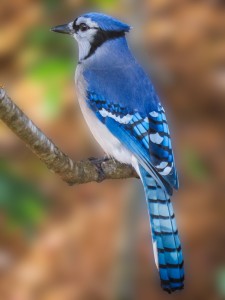
Foggy Cypress Tree
I was intrigued by an image of a cypress tree on our lagoon taken on a recent foggy morning, especially since it seems to render better in black and white tones than in color. I have been trying different processing techniques using Lightroom 5.3 and the Google Nik Software Suite plugins for Lightroom, and the range of possibilities is actually quite large.
The two images above are produced using the soft sepia (left) and dark sepia (right) presets.
And these two images were produced using the Wet Rocks preset (left) and the Full Contrast and Structure preset (right).
Perhaps my favorite preset for this image is the Antique Plate preset, which produces the sepia-colored monochrome image below.
If you do your own image processing, I recommend that you try some b&w processing for appropriate images, and I recommend the Nik software Silver Effects Pro for processing monochrome images. Give it a try–you’ll be carried back to memories of the days of stained fingers from your own chemical darkroom, but this time without the smell and stains!